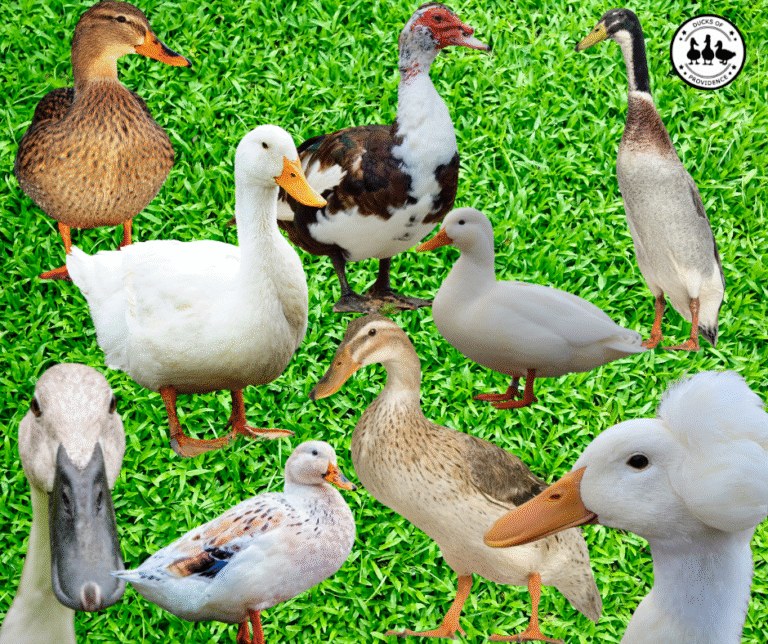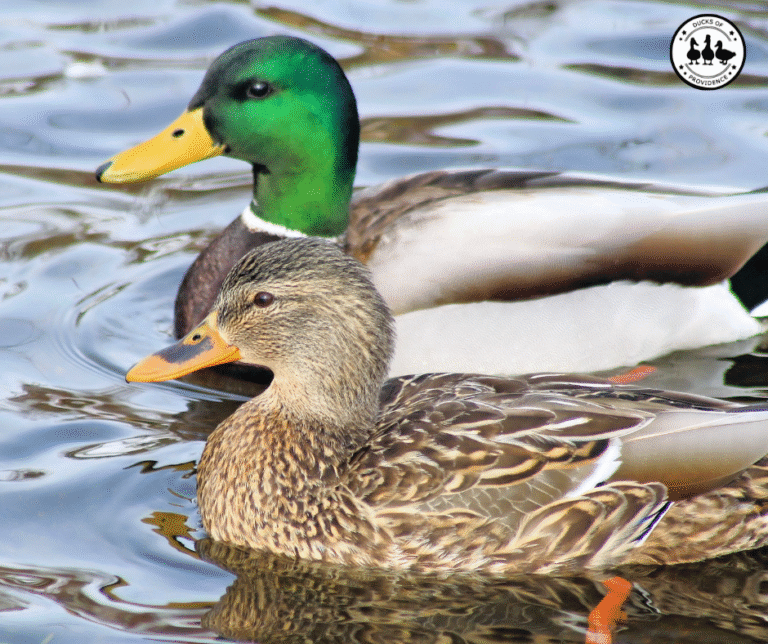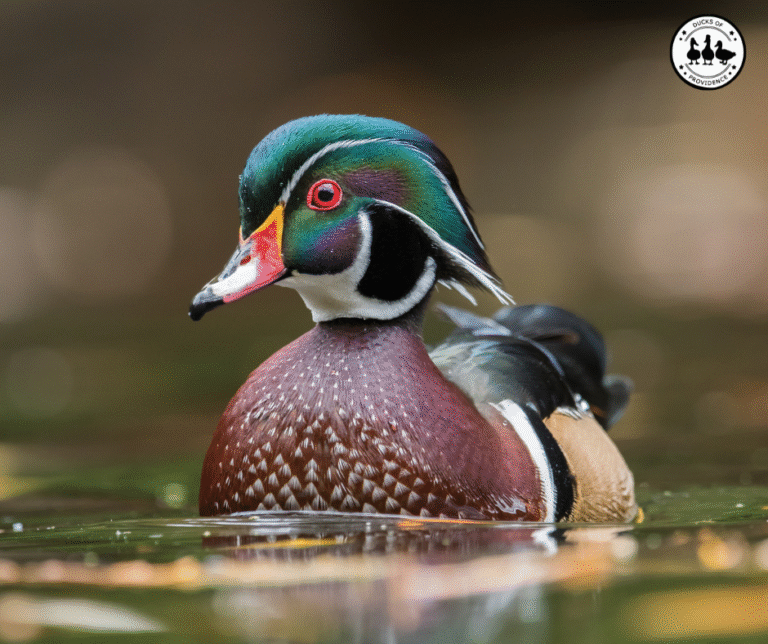
Ancona Duck – A Rare Duck Breed
Last updated on April 7th, 2025 at 07:32 pm
Ancona ducks are a unique and beautiful breed that is known for their distinctive mottled plumage and excellent laying ability. They are also relatively easy to care for and make a great addition to any backyard flock. Our Penny is an Ancona, and she is just beautiful.
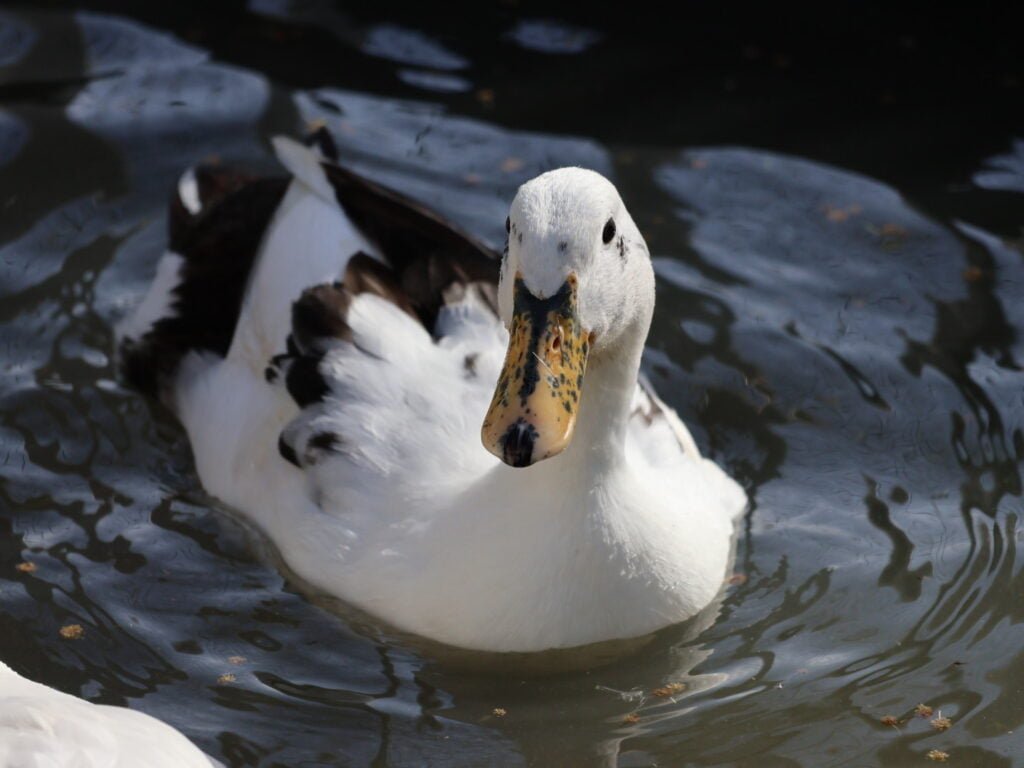
In this blog post, we will take a comprehensive look at the Ancona duck breed, including their history, appearance, temperament, and care requirements. We will also discuss some of the benefits of raising Ancona ducks and provide tips for finding a reputable breeder.
Ducks of Providence is free, thanks to reader support! Ads and affiliate links help us cover costs—if you shop through our links, we may earn a small commission at no extra cost to you. Thanks for helping keep our content free and our ducks happy! 🦆 Learn more
History
The Ancona duck is a relatively new breed that was developed in the United States in the early 1900s. The breed is thought to have originated from a cross between Magpie ducks and other breeds, such as the Indian Runner duck and the Pekin duck.
The Ancona duck is named after the Ancona chicken because of their similar appearance. On the other hand, the chicken is named after the city of Ancona, the capital of the Marches region of Italy.
Funny anecdote: I used the hashtag Ancona on Instagram for a while when I was posting about Penny, and someday, someone reached out to me asking why I was using this hashtag. This person was from Italy and was following this hashtag because he was from the city of Ancona. But now he was always getting pictures of our Penny in his feed 😄.
The American Poultry Association first recognized the Ancona duck in 1922, but it was removed from the Standard of Perfection in 1996. This is because the breed had become relatively rare, and there were not enough breeders to maintain a consistent standard.
In 2000, there were only 125 breeding Ancona ducks in the United States, and the breed was designated as critically endangered by the Livestock Conservancy in 2015. However, thanks to conservation efforts, the Ancona duck population has recently increased to between 1,000 and 1,500 breeding pairs. This increase has moved the Ancona duck off the critically endangered list and onto the watch list.
Appearance
Ancona ducks are medium-sized, averaging 6-6.5 pounds, with a stocky build. They have a distinctive black and white mottled plumage, which is often described as looking like a Holstein cow. Ancona ducks also have yellow bills with dark green or black spotting and orange legs and feet with black or brown markings that increase with age. No two birds are marked exactly the same.
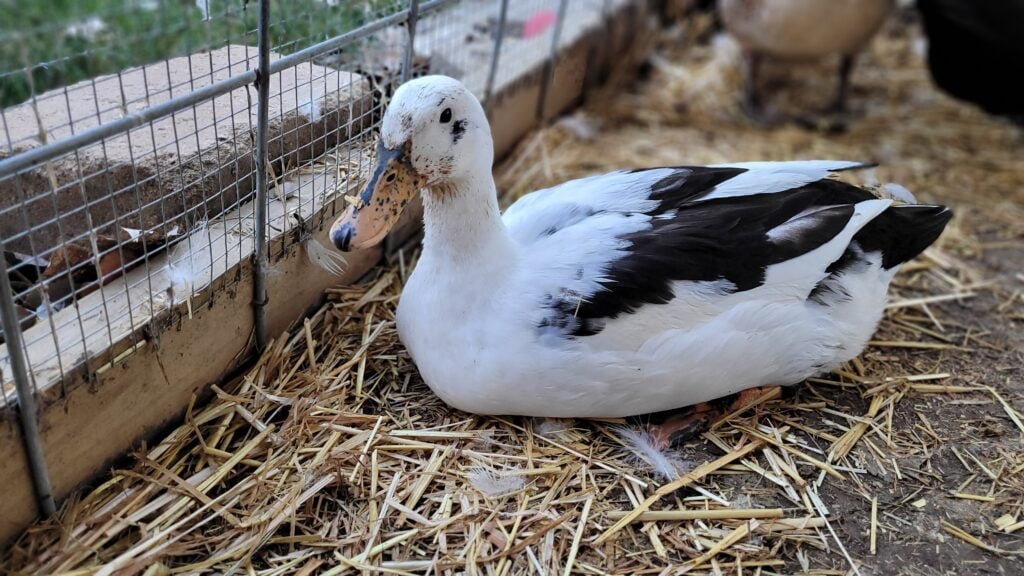
The appearance of Ancona ducks is very similar to Magpie ducks. However, their patterns are different. Magpies have a black-and-white pattern similar to a magpie bird’s markings.
Ancona Varieties
The Ancona duck comes in six varieties: Black and White, Blue and White, Chocolate and White, Silver and White, Lavender and White, and Tricolored.
The Chocolate variety is a sex-linked recessive trait, meaning the gene for chocolate feathers is located on the sex chromosome. If a chocolate drake (male duck) mates with a black duck, all female offspring will be chocolate, and all male offspring will be black. This is because the female offspring receive the chocolate gene from their father and a black gene from their mother. The male offspring receive a black gene from both parents.
If a black drake mates with a chocolate duck, all the offspring will be black. This is because the male offspring do not receive the chocolate gene from their father, and the female offspring receive a black gene from both parents. Only male offspring will carry the sex-linked recessive chocolate gene.
Temperament
Ancona ducks are known for their calm and friendly temperament. They are also relatively quiet ducks, making them a good choice for backyard flocks. Ancona ducks are also good foragers and will enjoy spending time grazing in the yard.
Ancona ducks are good at finding their own food, including large slugs. They are also good pets if you handle them when they are young. They don’t wander far, and they can’t fly.
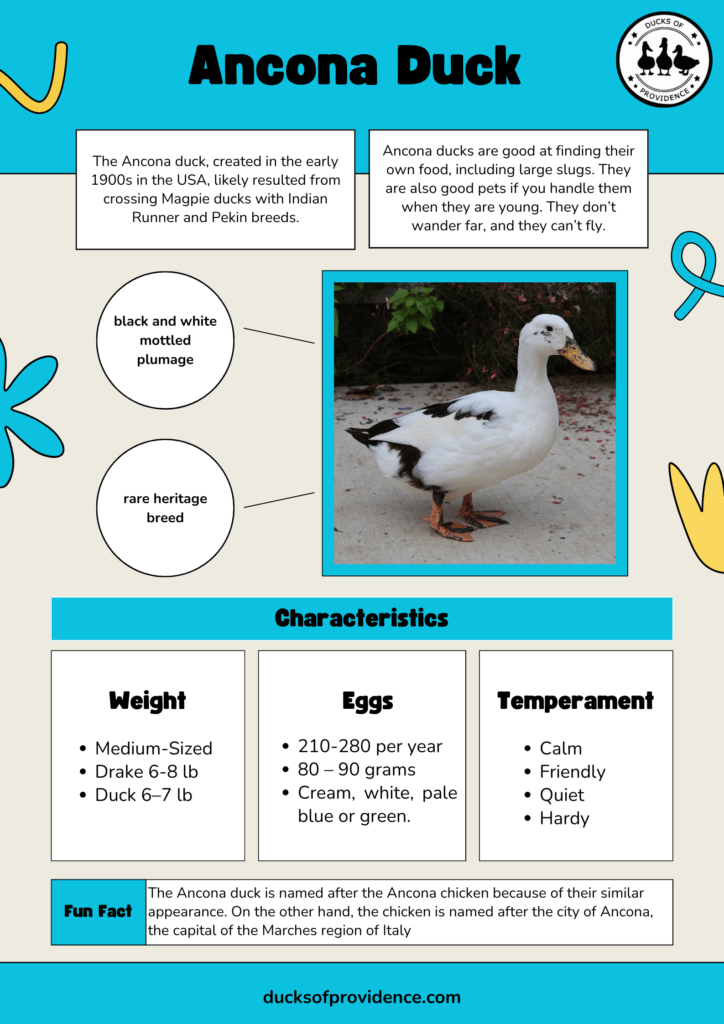
Care Requirements
Ancona ducks are relatively easy to care for. They need a clean, dry coop with plenty of fresh water and food. Ancona ducks also need access to a fenced-in area where they can forage and swim.
Benefits of Raising Ancona Ducks
There are many benefits to raising Ancona ducks. They are excellent layers, producing an average of 210-280 eggs annually. Egg color ranges from greenish/blue to white. Ancona ducks are also relatively fast growers and produce high-quality meat. But we obviously don’t care about that. We would never eat our Penny.
In addition, Ancona ducks are hardy and adaptable birds. They can tolerate a variety of climates and are relatively resistant to disease. Ancona ducks are also relatively low-maintenance birds, making them a good choice for first-time duck owners.
Just so you know, Ancona Ducks cannot really fly. They may try to jump and flap their wings, but they never get very high or far off the ground. Therefore, wing clipping is not necessary for them. However, it’s important to keep in mind that every duck is different. If you have a cross-breed, they may have different abilities and might be able to fly.
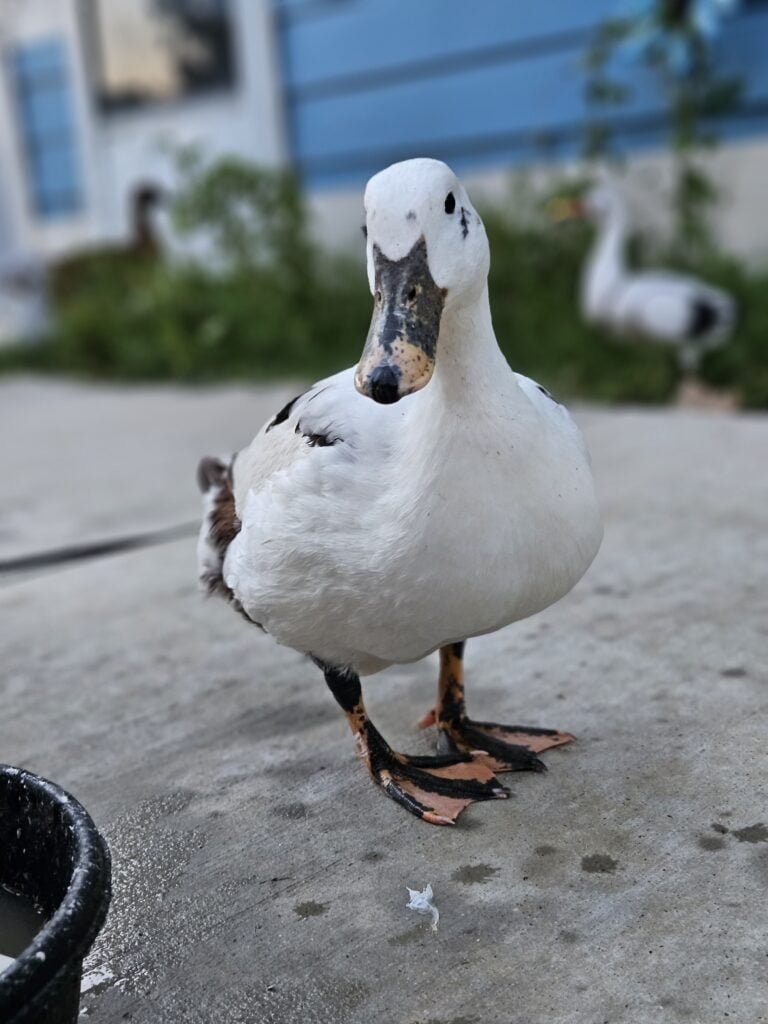
Finding a Reputable Breeder
If you are interested in raising Ancona ducks, it is important to find a reputable breeder. There are a few things you can look for to identify a reputable breeder, such as:
- Knowledgeable about the Ancona duck breed and be able to answer your questions about their birds.
- Clean and well-maintained facility.
- Provide you with health certificates for their birds.
Here are some breeders that do sell Ancona Ducks in the US:
Conclusion
Ancona ducks are a unique and beautiful breed that is known for their distinctive mottled plumage and excellent laying ability. They are also relatively easy to care for and make a great addition to any backyard flock.
If you are interested in raising Ancona ducks, be sure to do your research and find a reputable breeder. With proper care, your Ancona ducks will thrive and provide you with many years of enjoyment.
Learn About Other Duck Breeds:
- Cayuga Ducks: The Beautiful Black Duck Breed
- Crested Ducks: Pets with a Genetic Defect
- Muscovy Ducks: The Gentle Giants of the Duck World
- Khaki Campbell: The Champion Egg Layer That Can (Almost) Fly
- Welsh Harlequin Duck – Friendly, Hardy, and Stunningly Unique
- Indian Runner Ducks: The Upright, Active, and Entertaining Breed

